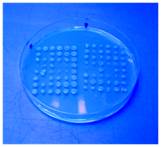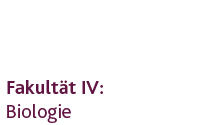EHB1 – a negative regulator of gravitropic and blue light induced bending
Although sessile, plants are able to grow towards or away from an environmental stimulus. Important examples are stem or leaf orientation of higher plants in response to the direction of the incident light. The responsible photoreceptors belong to the phototropin (phot) photoreceptor family. Previously it was shown that phototropin gets autophosphorylated upon illumination and binds to a scaffold protein termed NPH3, which stands for non phototropic hypocotyl.

Using a yeast three hybrid approach with phototropin and NPH3 as a bait complex we isolated a protein termed EHB1 (enhanced bending), with a so far unknown function. EHB1 binds reversibly to this binary complex and affects negatively the hypocotyl bending under blue light conditions in Arabidopsis thaliana. Thus, EHB1 turned out to be an important component in the regulation of blue light induced phototropism. EHB1 contains a full C2 calcium binding motif and has a significant homology to ADP-ribosylation factor of the GTPase-activating protein family (ARF-GAP) family. These proteins are key regulators of the transgolgi-network (TGN). Since gravitropic bending is also affected in ehb1 mutant plants, it cannot be ruled out that this protein might also have a more general role in auxin mediated bending towards an environmental stimulus.
Currently we are interested to understand, how EHB1 contributes connects both, gravitropic and phototropic stimuli to initiate a lateral auxin redistribution of the hypocotyl. For this purpose, we are currently performing experiments under Zero-G conditions using parabolic flight campaigns provided by European space agency (ESA) and/or the DLR (Deutsches Zentrum für Luft- und Raumfahrt). This work was funded by the DLH and the BMFT. An ongoing funding for this project is currently on the way. Start: Spring 2018.
